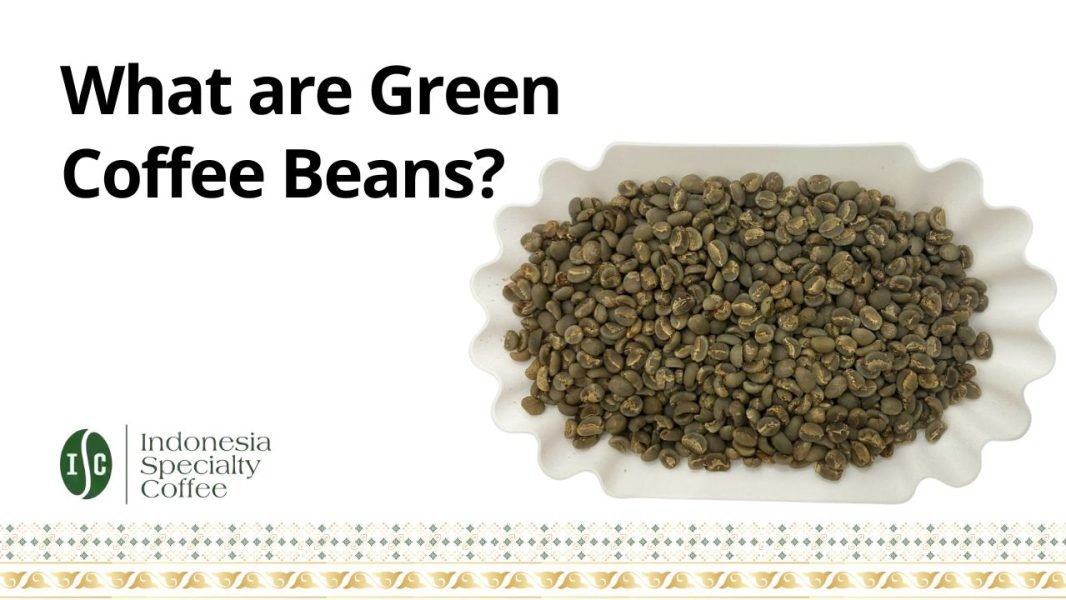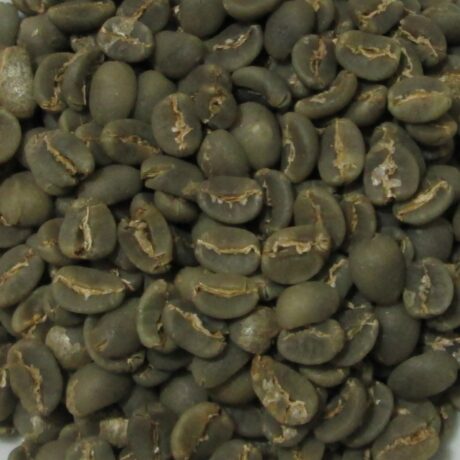What Are Green Coffee Beans?
Green coffee beans are the raw, unroasted seeds of the coffee cherry. They are the same beans used to produce the roasted coffee we drink, but they remain in their completely raw state after being separated from the fruit.
Green Coffee beans will look different depending on their processing methods. By the kinds of processing methods, green coffee beans’ colors are:
- Natural Process: Bright Yellow
- Honey Process: Yellow
- Semi-wash Process (Wet Hulled/Giling Basah): Bright Green
- Full-wash Process: Green
- Wine Process: Bright Yellow combined with Dark Red.
The green coffee bean process will also affect the overall taste after roasting.





How Long Do Green Coffee Beans Last?
Green coffee beans can last up to 12 months after harvest (best use practice) before being used for roasting. After this one-year period, the green coffee beans can still be used for a maximum of 3 years before roasting, but the taste will not be as good as the recommended one. The old stored green coffee beans (Aged Coffee) will have a slightly whiter color than the fresh ones, and your green coffee beans can even turn whitish if you don’t know how to store green coffee beans properly.
Do green Coffee Beans Have Caffeine?
Green Coffee Beans do have caffeine. The average concentration is 166.72 mg/L (or 1.67%) for arabica unroasted beans. According to a study by Awwad et al. (2021) on the effects of roasting, the concentration of chlorogenic acid significantly decreases with higher roasting temperatures.
After roasting, coffee’s caffeine content becomes more concentrated. While the absolute amount of caffeine per bean remains relatively stable, the roasting process removes significant water and mass. This concentration effect is evident in the provided data: the average caffeine concentration rises from 166.72 mg/L in green coffee to a peak of 203.63 mg/L in a medium roast. Even a dark roast, at 189.85 mg/L, retains a higher concentration than its unroasted counterpart.
What are The Contents of Green Coffee Beans?
Green coffee beans contain chlorogenic acids, caffeine, carbohydrates, proteins, and lipids. Also, they contain other essential organic molecules, like alkaloids such as trigonelline and vitamins, and minerals.
The short breakdown for Green Coffee Beans content:
- Chlorogenic acids: Major antioxidant in green coffee beans, believed to provide health benefits.
- Caffeine: A stimulant commonly found in coffee, although green coffee beans typically contain less caffeine than roasted coffee.
- Carbohydrates: Comprise a large portion of the dry weight of beans, serving as a source of energy.
- Proteins: Nutritional value as well as importance in the chemical reactions of processing.
- Lipids: Help in coffee flavor and aroma, but also are involved in reactions during roasting.
- Alkaloids: Like trigonelline (which is partially converted to niacin (vitamin B3) during roasting).
- Vitamins and Minerals: Green coffee beans are rich in a variety of B vitamins, vitamin C, iron, potassium, and magnesium.
- Miscellaneous: Aliphatic acids, lactones, aroma components, melanoidins
According to a study by Mengting Zhu et al. (2021) on Fast determination of lipid and protein content in green coffee beans from different origins using NIR spectroscopy and chemometrics.
Are Green Coffee Beans Safe to eat raw?
Yes, green coffee beans are generally safe to eat, but they’re not tasty and hard texture. So it’s not recommended that you eat it raw. When you are attempting to eat raw coffee beans for the first time, do not expect a pleasant nutty flavor that you may taste in roasted coffee. If you chew raw or green coffee beans, they will taste acidic, sour, and woody. Most people use some form of green coffee extract they can take as a supplement (example: for diet) instead of chewing on the beans or slurping down a cup of green coffee.
Summary
Green coffee beans are the raw, unroasted seeds that are the foundational starting point for all coffee. They contain a complex mix of components, including notable levels of chlorogenic acids and caffeine. While they are sometimes used for health supplements and extracts, their primary purpose is to be transformed through roasting. This roasting process dramatically changes their chemical composition, increasing the concentration of caffeine and developing the complex flavors and aromas we associate with a great cup of coffee. Therefore, understanding the green bean is essential to appreciating the full journey of coffee, from its raw state to a finished brew.





